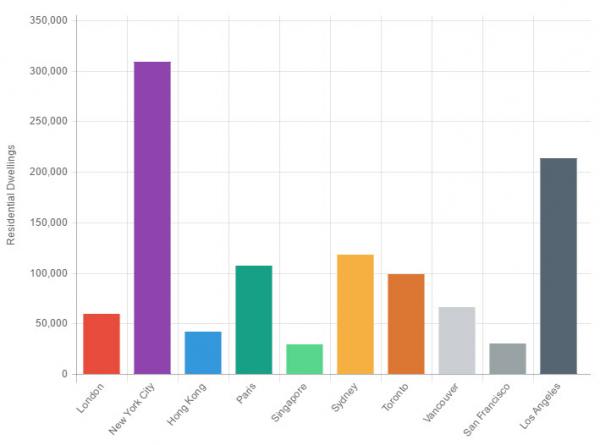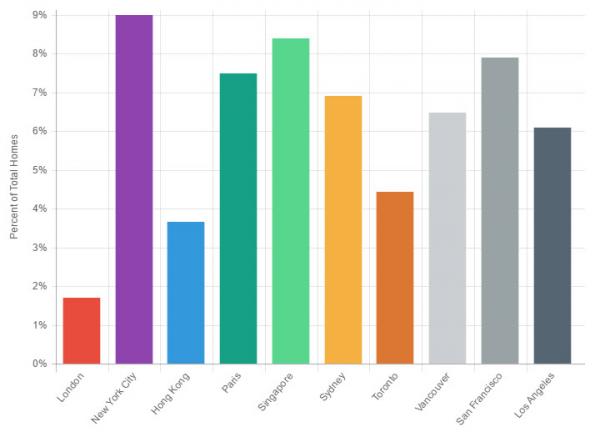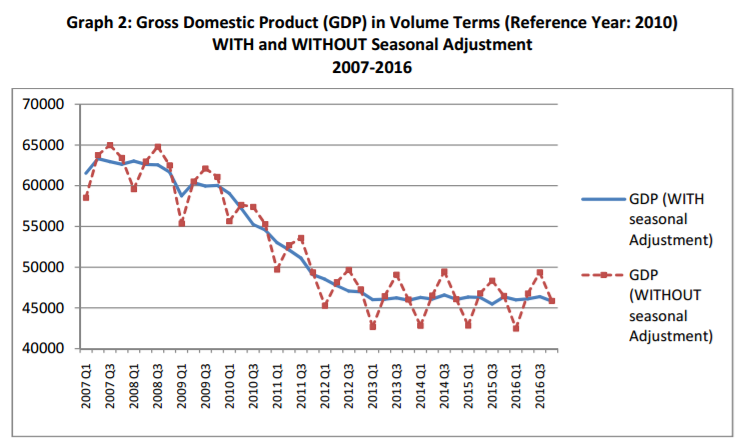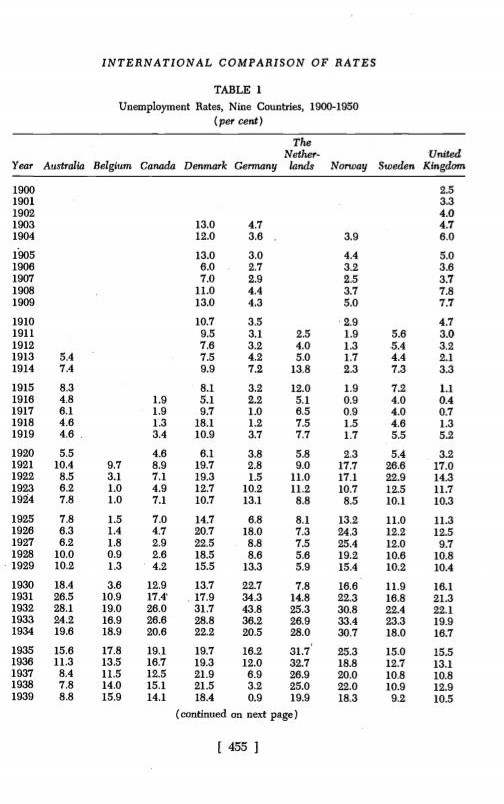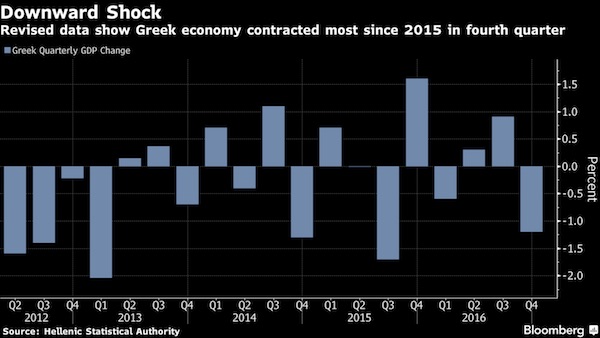
Dorothea Lange Resettlement project, Bosque Farms, New Mexico 1935

The Automatic Earth ‘celebrates’ its 9th birthday today! Thank you Nicole first of all, and thank all of you, so much, for reading, for commenting, being involved, for your kind donations. A true honor and pleasure.
(Someone had to point it out to me, of course I forgot.)

I’ve tried hard to understand what the women were/are protesting, and what I find is I’m still confused, since it seems they protest anything and everything. Or, as the Atlantic puts it: “the Women’s March was a protest that celebrated protest.” Looks to me like a surefire recipe for handing it to Trump on a platter.
Trump seems to be part of what’s being protested, but what exactly? His “grab the pussy” nonsense? But that was years ago and he was talking about willing women. Stupid and ugly, but it doesn’t make him a threat to all women. His abortion stance? Some of his supporters are pro-lifers for sure, but so far nothing indicates he’ll lead some big turnaround on the issue.
What I think everybody needs to recognize is that there are, and especially will be, very obvious and clearly definable topics linked to this administration that should be vigurously protested and investigated. But this protest doesn’t do any such thing.
Neither does the Democratic party, who can’t locate their own asses anymore. And most of all neither do the media, which for example covered nothing yesterday but a piece of absurd briefing theater about the number of people attending the inauguration. Once again handing the floor to Trump. It’s embarrassing.
Pointing out silly things Trump says that you know everyone in your respective echo chambers will agree with you on is easy, and Trump will keep feeding you. What it is not, though, is journalism. Or politics, for that matter. Or meaningful protest.
The role of Trump, I think, in America, must be that of a wake-up call. But nobody’s waking up.
• The Inauguration, and the Counter-Inauguration (Atlantic)
In the middle of the National Mall, on the same spot that had, the day before, hosted the revelers who had come out for the inauguration of Donald Trump, a crowd of people protesting the new presidency spontaneously formed themselves into a circle. They grasped hands. They invited others in. “Join our circle!” one woman shouted, merrily, to a small group of passersby. They obliged. The expanse—a small spot of emptiness in a space otherwise teeming with people—got steadily larger, until it spanned nearly 100 feet across. If you happened to be flying directly above the Mall during the early afternoon of January 21, as the Women’s March on Washington was in full swing, you would have seen a throng of people—about half a million of them, according to the most recent estimates—punctuated, in the middle, by an ad-hoc little bullseye.
“What is this circle about?” a woman asked one of the circle-standers. “Nobody knows!” the circle-stander replied, cheerfully. The space stayed empty for a moment, as people clasped hands and looked around at each other with grins and “what-now?” expressions. And then: A woman ran through the circle, dancing, waving a sign that read “FREE MELANIA.” The crowd nodded approvingly. Another woman did the same with her sign. A group of three teenage boys danced with their “BAD HOMBRE” placards. The crowd whooped. Soon, several people were using the space as a stage. A woman dressed as a plush vulva shimmied around the circle’s perimeter. The circle-standers laughed and clapped and cheered. They held their phones in their air, taking pictures and videos. They cheered some more.
The Women’s March on Washington began in a similarly ad-hoc manner. The protest sprang to life as an errant idea posted to Facebook, right after Trump won the presidency. The notion weathered controversy to evolve into something that, on Saturday, was funereal in purpose but decidedly celebratory in tone. The march, in pretty much every way including the most literal, opposed the inaugural ceremony that had taken place the day before. On the one hand, it protested President Trump. Its participants wore not designer clothes, but jeans and sneakers and—the unofficial uniform of the event—pink knit caps with ears meant to evoke, and synonymize, cats. It had, in place of somber ritual, a festival-like atmosphere. It featured, instead of pomp and circumstance, people spontaneously breaking into dance on a spontaneously formed dance floor.
And yet in many ways, the march was also extremely similar to the inauguration whose infrastructure it had co-opted, symbolically and otherwise, for its own purposes. The Women’s March on Washington shared a setting—the Capitol, the Mall, the erstwhile inaugural parade route—with the ceremonies of January 20. And, following an election in which the victor lost the popular vote, the protest seems to have bested the inauguration itself in terms of (physical) public turnout. During a time of extreme partisanship and division—a time in which the One America the now-former president once spoke of can seem an ever-more-distant possibility—the Women’s March played out as a kind of alternate-reality inauguration: not necessarily of Hillary Clinton, but of the ideas and ideals her candidacy represented. The Women’s March was an installation ceremony of a sort—not of a new president, but of the political resistance to him.
“I DO NOT ACCEPT THIS FILTHY ROTTEN SYSTEM,” read one sign, carried by Lauren Grace, 35, of Philadelphia. She got the quote from Dorothy Day. And she intended it, Grace explained to me, to protest “a system that sort of left me out.” “We’re told that voting is a sacred right in this country,” Grace said. “But even though Hillary won the popular vote, she still lost. I feel pretty conflicted about a country where that could happen.”
The Women’s March was, to be sure, also a protest march in an extremely traditional vein: It featured leaders—celebrities, activists, celebrity activists—who gave speeches and offered performances on a stage with the Capitol in its background; its participants held signs, and chanted (“This-is-what-a-feminist-looks-like!,” “No-person-is-illegal!”), and commiserated. It was also traditional in that its participants were marching not for one specific thing, but for many related aspirations. Women’s reproductive rights. LGBTQ rights. Immigration rights. Feminism in general (“FEMALES ARE STRONG AS HELL,” one sign went, riffing off a famous feminist’s Netflix show). The environment (“CLIMATE CHANGE IS REAL,” “MAKE THE PLANET GREAT AGAIN”). Science (“Y’ALL NEED SCIENCE”). Facts (“MAKE AMERICA FACT-CHECK AGAIN”). Some signs argued for socialism. Some argued against plutocracy. Some argued for Kindness. Some pled for Peace. Some simply argued that America is Already Great.
This was a big-tent protest, in other words—a messy, joyful coalescence of many different movements. The Women’s March deftly employed, in its rhetoric, the biggest of the big-tent tautologies: The point of this protest wasn’t so much the specific things being protested as it was the very bigness of the crowds who were doing the protesting. This was another way the protest alternate-realitied the presidential inauguration: Just as the official ceremony is meant to celebrate not only the person occupying the presidency, but the presidency itself, the Women’s March was a protest that celebrated protest.
Read more …

Tyler Durden gets the essence: ..what he is seeing is that he once again is controlling the media narrative, which is focusing on a very immaterial and arbitrary issue, instead of spending time on investigative work and reporting on far more serious issues relating to Trump’s new administration.
• White House Spokesman Slams Media In Bizarre First Briefing (ZH)
In a bizarre first briefing, White House press secretary Sean Spicer on Saturday unloaded a blistering attack on the media and accused it of false reporting about the otherwise irrelevant question of why Trump’s inauguration crowd was visibly smaller than that of Obama’s. Spicer used up virtually all the time in his first official appearance in the Press Briefing Room to denounce news organizations’ focus on the inaugural crowd size, saying “these attempts to lessen the enthusiasm of the inauguration are shameful and wrong.” We wouldn’t necessarily use those words: silly should suffice since if Trump really wanted to “defend” why fewer people attended his inauguration, he can simply say many more of his supporters are employed and had to be at work on Friday, than during either Obama’s 2009 or 2013 inauguration events.
However, the press secretary decided that hyperbole is the better part of valor and said “This was the largest audience to ever witness an inauguration, period, both in person and around the world” Spicer made the allegation despite photographs of the event clearly showed that the Mall was not full in the sections Spicer described, with dwindling-to-nonexistent crowds near the Smithsonian Institution Building and west toward the Washington Monument. There was also sparse attendance along the parade route from the Capitol to the White House. He alleged that some photos of the inauguration were “intentionally framed in a way” that minimized the crowd, without providing examples or evidence.
No official agency provides estimates of the size of gatherings on the Mall. But photos taken from the same vantage point at about the same time of day show that the crowds were far smaller than for President Barack Obama’s first inauguration, which Washington city officials estimated at 1.8 million people.Ultimately, the whole press briefing episode had a surreal undertone, one in which Trump, via his speaker, appears to continue to troll the press, now in the White House. As a seemingly perturbed NYU journalism professor Jay Rosen summarized it “Wow. Sean Spicer walked to the podium. Unloaded on the media for bias. Accused reporters of dishonesty. Walked off without taking questions.” The reaction among the rest of the press was similar.
Spicer took no questions from reporters and he did not say specifically how many people the White House believes attended the inauguration. He said three large sections of the Mall that each held at least 200,000 people were “full when the president took the oath of office.” Earlier on Saturday, in remarks at CIA headquarters in Langley, Trump said that from his vantage point at the podium, “it looked like a million, million and a half people. They showed a field where there were practically nobody standing there, and they said Donald Trump did not draw well.” Trump also said parts of the National Mall “all the way back to the Washington Monument” were “packed.”
Quoted by Bloomberg, former White House spokesman Ari Fleischer said on Twitter after Spicer’s remarks that “This is called a statement you’re told to make by the president. And you know the president is watching.” He is indeed, and what he is seeing is that he once again is controlling the media narrative, which is focusing on a very immaterial and arbitrary issue, instead of spending time on investigative work and reporting on far more serious issues relating to Trump’s new administration.
Read more …

The German press is just like the American one, clinging to consensus, hanging on to what is already lost: “Not only Democrats are hoping for an impeachment proceeding.”
• The Demons Have Been Unchained (HB)
That was no presidential speech; that was a veritable declaration of war. Threatening in tone. Cold and calculating in logic. Change minus the hope. Donald Trump used the traditional Inauguration Day address to settle a score with the U.S. political establishment going back decades. With four ex-presidents sitting a few feet behind him, the 45th president delivered a populist manifesto. Until his victory, the nation’s political elite used days like these, he told America, to celebrate amongst themselves. Their triumph was not your triumph. Their well-being was not your well-being. But this time, power would transfer not just from one party to the other, but from Washington back to the people. In the people’s name, he will put America “first.” In their name, he will “take back” America’s factories.
In their name, he will “exterminate” Islamic terrorism, end inner-city drug gang “bloodbaths” and get NATO partners like Germany to pay more for Europe’s security. In domestic policy, the Trump agenda sounds like a blueprint for civil war; in foreign policy, it sounds like the dawn of a new ice age. Not that he’s cold-bloodedly planning either one, but he knows where his fiery rhetoric will lead him. The new president loves a good fight, not consensus. He doesn’t want to hug, but to smother, to overwhelm. Yesterday was his day, but the days that follow may belong to his opponents. There are three main opponents that could bring him down politically.
Opponent No. 1: The other America. Across the country, an anti-Trump movement is growing. While only 10,000 people came to an open-air concert in Washington celebrating his victory on the night before the inauguration, 20,000 people took to the streets in New York to protest his elevation. Their signs shouted: Not My President. The security and surveillance costs around Trump Tower on Fifth Avenue, at the corner of 56th Street, is costing taxpayers about a half million dollars – each day.
Opponent No. 2: The Media. Among publishers, producers, filmmakers and journalists, Trump has hardly any friends. CNN, The Washington Post, The New York Times and Hollywood couldn’t warm to the volcanic personality of the new president. Even an unbroken Twitter assault has no chance against such a monolithic wall of media rejection. He hates them, and they hate him right back. He pushes forward his agenda, and they push back unabashedly with theirs. Trump enters The White House with the lowest approval rating ever of an elected president.
Opponent No. 3: The Political Party System. Washington is having an allergic reaction to Trump. Democrats and even Republicans are cooperating on Capitol Hill to investigate the Trump team’s contacts to Russia in a special committee. House Speaker Paul Ryan doesn’t see himself as a Trump follower but as a Trump successor. He is the wolf in sheep’s clothing, biding his time, waiting for an opening. Put another way: Not only Democrats are hoping for an impeachment proceeding. America is now on the brink of a new period of polarization. The demons in this fraternal battle have been unchained. The greatness that Trump seeks will not be borne under these conditions. An icy wind is blowing across the land.
Read more …

Good overview by veteran Parry of late 20th century false news campaigns, Nixon vs Johnson, Reagan vs Carter and more.
• How the NYT Plays with History (Robert Parry)
Whenever The New York Times or some other mainstream news outlet holds itself out as a paragon of professional journalism – by wagging a finger at some pro-Trump “fake news” or some Internet “conspiracy theory” – I cringe at the self-delusion and hypocrisy. No one hates fake news and fact-free conspiracy theories more than I do, but the sad truth is that the mainstream press has opened the door to such fantasies by losing the confidence of the American people and becoming little more than the mouthpiece for the Establishment, which spins its own self-serving narratives and tells its own lies. Rather than acting as a watchdog against these deceptions, the Times and its mainstream fellow-travelers have transformed themselves into little more than the Establishment’s apologists and propagandists.
If Iraq is the “enemy,” we are told wild tales about how Iraq’s non-existent WMD is a danger to us all. If Syria is in Washington’s crosshairs, we are given a one-sided account of what’s happening there, black hats for the “regime” and white hats for the “rebels”? If the State Department is backing a coup in Ukraine to oust an elected leader, we are regaled with tales of his corruption and how overthrowing a democratically chosen leader is somehow “democracy promotion.” Currently, we are getting uncritical stenography on every conceivable charge that the U.S. government lodges against Russia. Yet, while this crisis in American journalism has grown more severe in recent years, the pattern is not entirely new. It is reflected in how the mainstream media has missed many of the most significant news stories of modern history and has, more often than not, been an obstacle to getting at the truth.
Then, if the evidence finally becomes so overwhelming that continued denials are no longer tenable, the mainstream media tries to reclaim its tattered credibility by seizing on some new tidbit of evidence and declaring that all that went before were just rumors but now we can take the long whispered story seriously — because the Times says so.
Read more …

How long before Brussels starts begging countries to stay, offering deals and discounts?
• Any Country Leaving Euro Zone Must Settle Bill First: ECB’s Draghi (R.)
Any country leaving the euro zone would need to settle its claims or debts with the bloc’s payments system before severing ties, ECB President Mario Draghi said. The comment – a rare reference by Draghi to the possibility of the currency zone losing members – came in a letter to two Italian lawmakers in the European Parliament released on Friday. It coincides with a groundswell of anti-euro sentiment in Italy and other euro zone states, fueled in part by last June’s unprecedented decision by Britain to leave the European Union. “If a country were to leave the Eurosystem, its national central bank’s claims on or liabilities to the ECB would need to be settled in full,” Draghi said in the letter.
Based on data to end-November from the Target 2 payment system, that would leave Italy with a €358.6 billion ($383.1 billion) bill. The system records flows of payments between euro zone countries. The threat of defaults on cross-border debts has often been credited as one element keeping the euro zone together throughout the financial crisis. As these payments are not generally settled, weaker economies including Italy, Spain and Greece have accumulated huge liabilities towards Target 2 while Germany stands out as the biggest creditor with net claims of €754.1 billion. Target 2 imbalances have worsened in recent months, with Harvard economist Carmen Reinhart warning of capital flight from Italy.
Read more …

Am I wrong in thinking the UK will have a very hard time signing any deal as long as it’s part of the EU? What are the odds of that even being legal in the first place?
• Trump Team in Talks with UK on Post-Brexit Trade Deal (BBG)
The Trump administration this week will begin laying groundwork for a trade deal between the U.S. and the U.K. that would take effect after Britain leaves the European Union, a White House aide said. Prime Minister Theresa May last week declared Britain is “open for business” as she announced plans to pursue a clean break with the EU, paving the way for the U.K. to eventually strike new trade accords with the continent and other countries. May is to visit Washington this week. Trump officials believe their discussions with her government encouraged May to be more aggressive in exiting the union. She can use any American support to argue the U.K. will prosper outside the bloc although she risks inflaming tensions with EU leaders if they suspect her government is actively negotiating trade deals while still an EU member.
Two of President Donald Trump’s senior advisers, Steve Bannon and son-in-law Jared Kushner, met with U.K. Foreign Secretary Boris Johnson in New York on Jan. 8. The three are preparing for the future pact, the aide said, requesting anonymity because the discussions aren’t public. Bannon, Trump’s National Security Adviser Michael Flynn, and other administration officials have also met with British defense and intelligence leaders, the aide said. President Barack Obama warned in April that if the U.K. pursued Brexit, the country would go to the “back of the queue” for U.S. trade deals. U.K. voters chose to leave the EU anyway in a June referendum, and Trump now appears to be scrapping Obama’s position on the matter. Trump’s team is also considering a deal to reduce barriers between U.S. and British banks, the Sunday Telegraph reported, citing officials from both sides.
Trump has tapped Woody Johnson, the billionaire owner of the New York Jets NFL team, to serve as U.S. ambassador to the U.K., a person familiar with the matter said on Jan. 19. May and Mexican President Enrique Pena Nieto will make visits to the U.S. this month to meet with Trump, White House officials said. May will meet with Trump on Jan. 27, White House Deputy Press Secretary Sarah Huckabee said on Saturday. Pena Nieto will meet with Trump on Jan. 31, said White House Press Secretary Sean Spicer.
Read more …

The author starts out promising, then gets lost in the woods.
• Utopian Ideas On Climate Change Will Get Us Precisely Nowhere (G.)
Urging people to stop consuming stuff in order to slow the rate of climate change is a gambit that is doomed to fail. It would be helpful if shoppers put off buying a suit or installing a new kitchen, but it’s not going to happen. Demonising those who fly to Barcelona for a long weekend is another tactic that will have almost no impact. It’s not for nothing that economists base many of their assumptions on populations having unlimited wants. Most people strain to acquire stuff that the rich have long taken for granted. Telling them to switch off this desire has never worked and is unlikely to do so now, even when the future of the planet is at stake. In this vein, the accession of Donald Trump to the presidential throne should not be read as a spectacular one-off reaction by a narrow, if electorally important group who missed out on GDP growth.
Consumption is how most people measure progress, and that will still be the case next year and in 10 years’ time, when Trump is long gone. Take a look at the figures for flights in and out of the UK, home of some the world’s busiest airports. City Airport, which is embarking on a £344m expansion, saw 4.3 million passengers in 2015. Heathrow, which has the government’s blessing for its own multibillion-pound development, welcomed 75 million passengers in the same year, Gatwick broke 40 million, and Stansted hit double-digit growth with 22.5 million passengers. Last year, Manchester airport boasted annual growth of 11% after it attracted 23.7 million passengers. And these figures don’t include the huge amount of imported and exported goods that flow through Britain’s airports.
If it’s true that trade is in the UK’s DNA – and the figures support this – any government, of whatever colour, will think twice before standing in the way of airport expansion. That doesn’t mean governments should not think about air travel when searching for ways to tackle climate change. Aircraft makers should be forced to make their planes more efficient, and airport owners must clean up the pollution they create. But this is an exercise in minimising the impact of flying, given that its expansion is inevitable. The same analysis should have applied to the country’s steel plants –and to its other polluting industries. Without a reduction in steel consumption, we must live with its continued production.
Read more …





